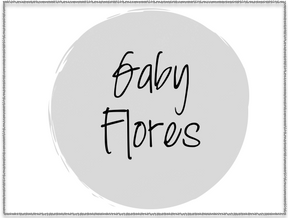Every weekend during most of my childhood, we traveled to see Lela and Lelo, my grandparents on my mom’s side. The highway from Caracas to Villa de Cura wasn’t fun. Often my sister and I would get motion sick. It is only a 130km stretch but for my sister and I, it was such a dread getting in the car every Saturday morning.
I can still picture the highway: the turns, the hills, the little houses on the hills, the changing vegetation from the valley to the lowlands, and the change in temperature. Often when my dad would drive, he would try to keep us entertained by making us sing songs or alternatively my sister and I would try to keep ourselves busy so we wouldn’t get bored. We would either sit on the floor of the back seats or fight to laydown on top of the back seat (between the glass and the seat). Sleeping would help time go faster.
One thing that I would always looked forward to was stopping to grab a bite.
There was one particular stop that I used to love. It was a fruit shop where they sold Tizana. Tizana is a drink made from a mix for tropical fruits, fruit juices, grenadine and lots of ice.
To make tizana, fruits such as papaya, watermelon, strawberries, grapes, banana and pineapple are chopped up and soaked in a mixture of orange juice and limeade. The mixture is kept for a few days in the fridge for the fruit flavors to intensify. Some people would serve it with a strawberry soda before serving it. I remember the tizanas were always served with the plastic straws that had a spoon at the end, so you could enjoy the fruit that remained in the bottom of the cup.
Another stop we would make less often was to get Golfeados. Sometimes we would take a different route due to an accident or construction of the highway. It would take us to a place called Los Teques.
Los Teques a city located on a higher altitude so the temperature was a bit cooler. When I hear Los Teques, I remember sweaters and jackets, even scarves.
There was a bakery that had the best Golfeados that I can remember ever eating.
Golfeados are sweet sticky rolls, much like cinnamon buns but without the cinnamon. They have two main ingredients: papelón (the molasses-like by product of sugar cane processing), and queso llanero – a white salty cheese, widely used in Venezuela cuisine. Both are rolled up inside an anise-flavoured sweet roll dough, then baked, drizzled with syrup made from the papelón, and sprinkled with more grated cheese. Delicious!
We would always buy extra to bring to my Lela’s house.
Another famous place to stop at was Sanduches de Permil de la Encrucijada. La Encrucijada was the exit from the highway into the town of Cagua, a few kilometers before arriving to Villa de Cura. Encrucijada is a four-way intersection. At this particular intersection you would find gas stations, restaurants, washrooms, stores, etc.
One of the restaurants had one of the best pork sandwiches, some said, in the country. People travelling west, east or south would stop here to grab a sandwich before continuing with their journey. The meat used for the sandwiches was special because of the seasoning used and because the haunch of the pig would rotate to roast for hours and holes were poked to the flesh to ensure that the flavours would be well absorbed.
You could ask to include tomato or cheese, but not too many more variations. You could also ask for the crispier part of the haunch or the part with less fat.
As we got older or even more so later when we would go on vacation to Venezuela, other spots to eat had opened up along the highway.
The famous Areperas would be packed of travellers taking a break to have arepas with coffee or fresh juices. I never understood how Areperas were able to function properly and serve arepas so promptly. There was never an order to get your arepas. You just come up to the counter and order. And people arriving and waiting understood who was first or next. No conflict, no flights. If you’re next, you’re next.
At the areperas you always had so many choice. The fillings were unlimited. You could choose from half dozen types and flavours of meats and/or cheeses, eggs cooked in different ways, chicken, tuna, egg, or many other variety of salads, shrimp or fish depending on the meal or the most famous one, the Reina Pepiada. Reina Pepiada (Curvy Queen – refers to the “curviness” of a Venezuelan beauty queen who won the Miss World back in 1955, Susana Duijm) is a mix of grilled shredded chicken with mayonsaise and topped with avocado. There is also a great deal of sauces to top to the arepas with.
Once you are ready to order, the person behind the counter grabs the arepa, cuts it open from the side, lets the steam out, takes some of the soft dough from inside, spreads butter and he or she is now ready to hear what you want in your arepa.

 Gabriela Flores is a culinary nutritional expert, food coach and a wellness enthusiast. She’s the co-founder and kitchen goddess at Bliss B4 Laundry: Inspirational Events for Mind, Body, and Soul. She’s made it a mission to find ways to transform the human body from deprivation to abundance. Her passion is food: to get in the kitchen and experiment with new ingredients to make them delicious, nourishing and extract their power to heal.
Gabriela Flores is a culinary nutritional expert, food coach and a wellness enthusiast. She’s the co-founder and kitchen goddess at Bliss B4 Laundry: Inspirational Events for Mind, Body, and Soul. She’s made it a mission to find ways to transform the human body from deprivation to abundance. Her passion is food: to get in the kitchen and experiment with new ingredients to make them delicious, nourishing and extract their power to heal.